How to Rewrite AI-generated Text
- January 21, 2025
- 6 mins read
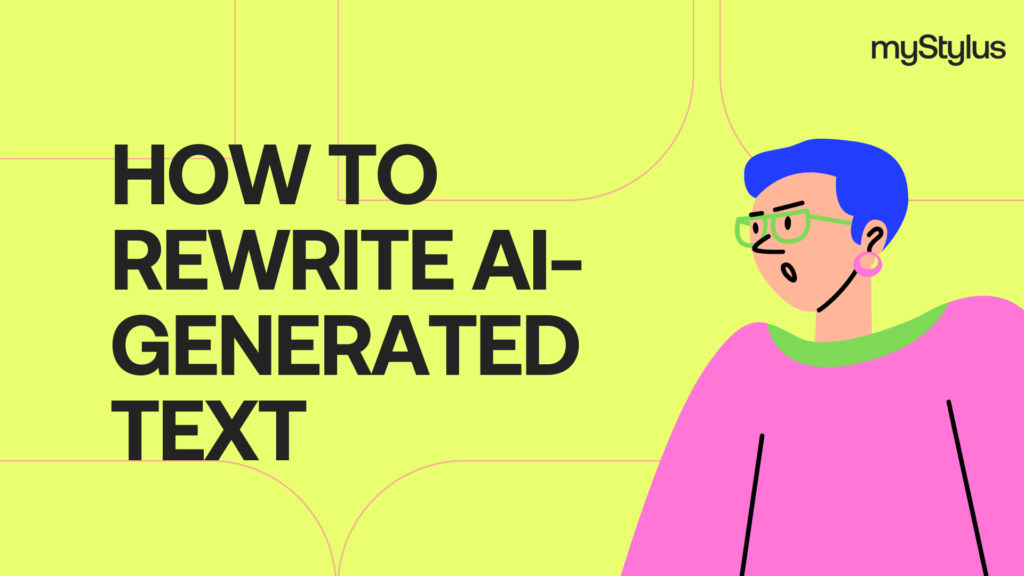
AI-generated text can seem very clearly written, but those using AI text generators typically need a rewriter to make the text sound more human. But how do you competently rewrite AI-written text? Let’s take a look at the options.
Rewriting AI Content: Strategies And Techniques That Work
Rewriting AI-generated content requires a multifaceted approach to transform it into more human-sounding text. One effective strategy is restructuring the content, which involves rearranging ideas and information to create a more natural flow. This can be combined with adding personal insights and examples, which not only humanizes the text but also provides unique value that AI cannot replicate.
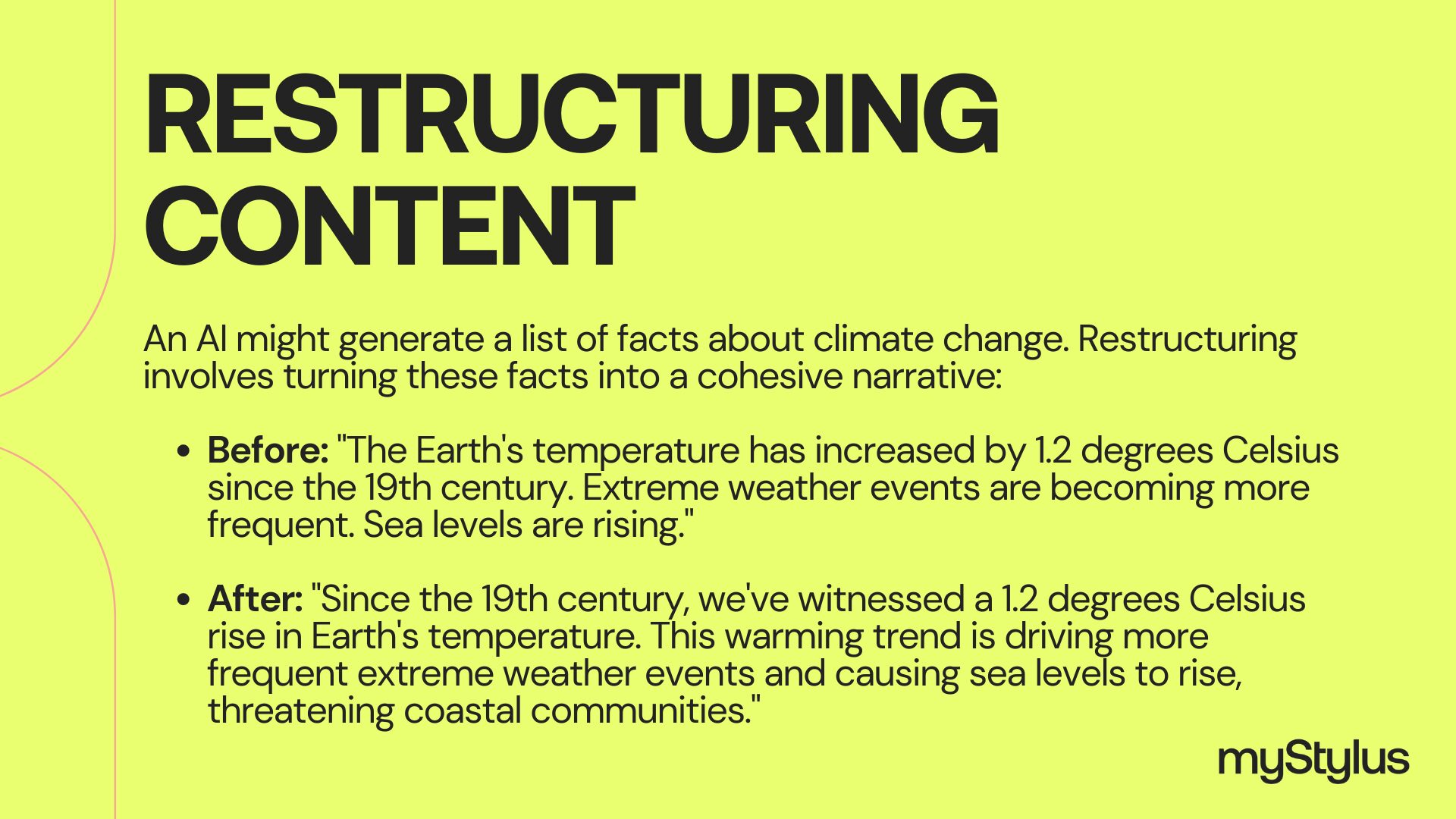
Improving language and style is crucial in paragraph rewriting. This involves refining sentence structures, varying sentence lengths, and incorporating idiomatic expressions that AI might miss. Paraphrasing techniques play a significant role here. Using synonyms can diversify vocabulary, while changing the form of words (e.g., from noun to verb) can alter sentence dynamics. Modifying grammatical structures and word order can further enhance the human touch.
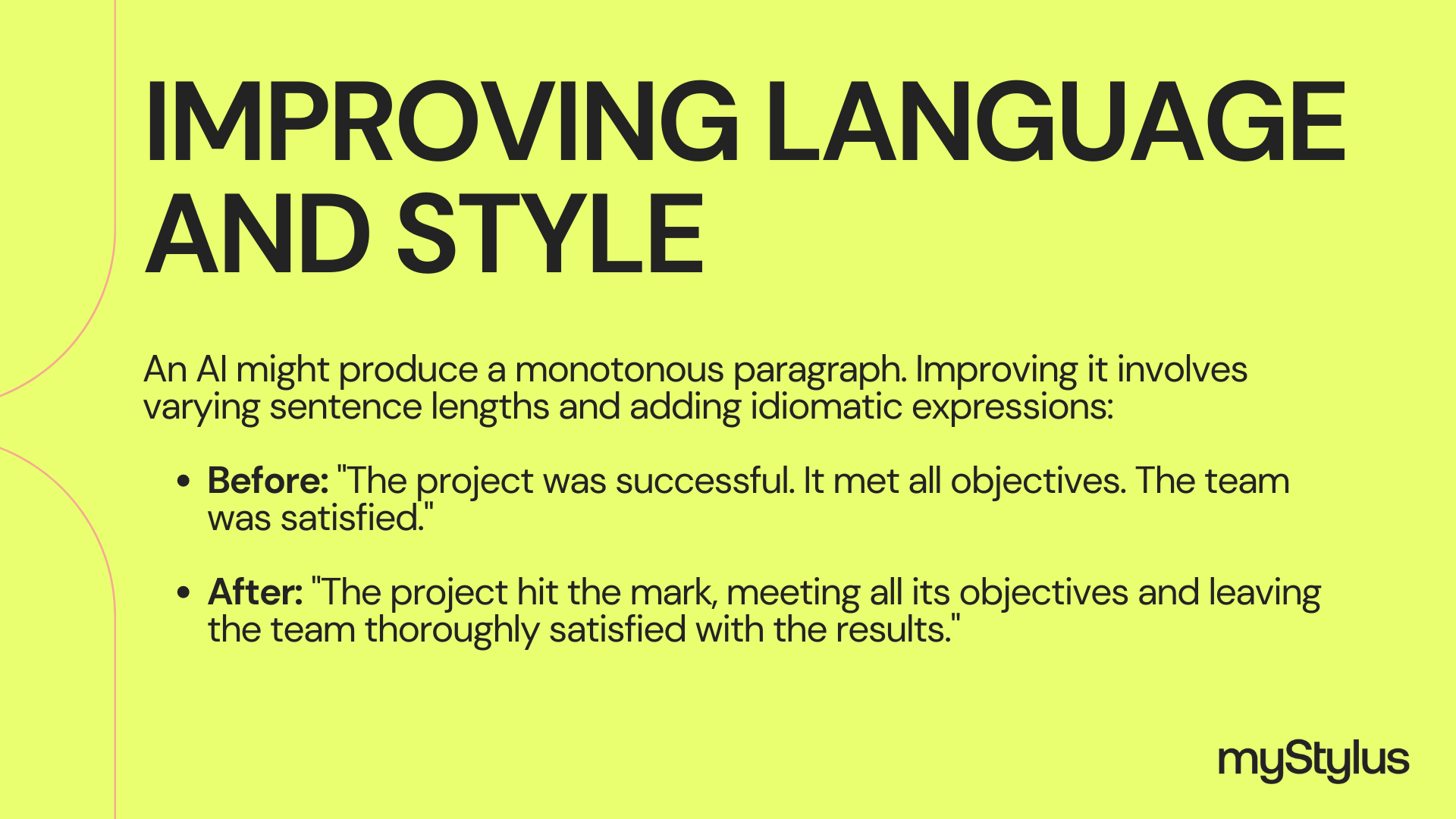
Fact-checking is a crucial step in the rewriting process. While AI can generate plausible-sounding information, it may not always be accurate or up-to-date. Verifying facts and adding current, relevant information can significantly enhance the content’s quality and reliability, providing a sense of security to the audience.
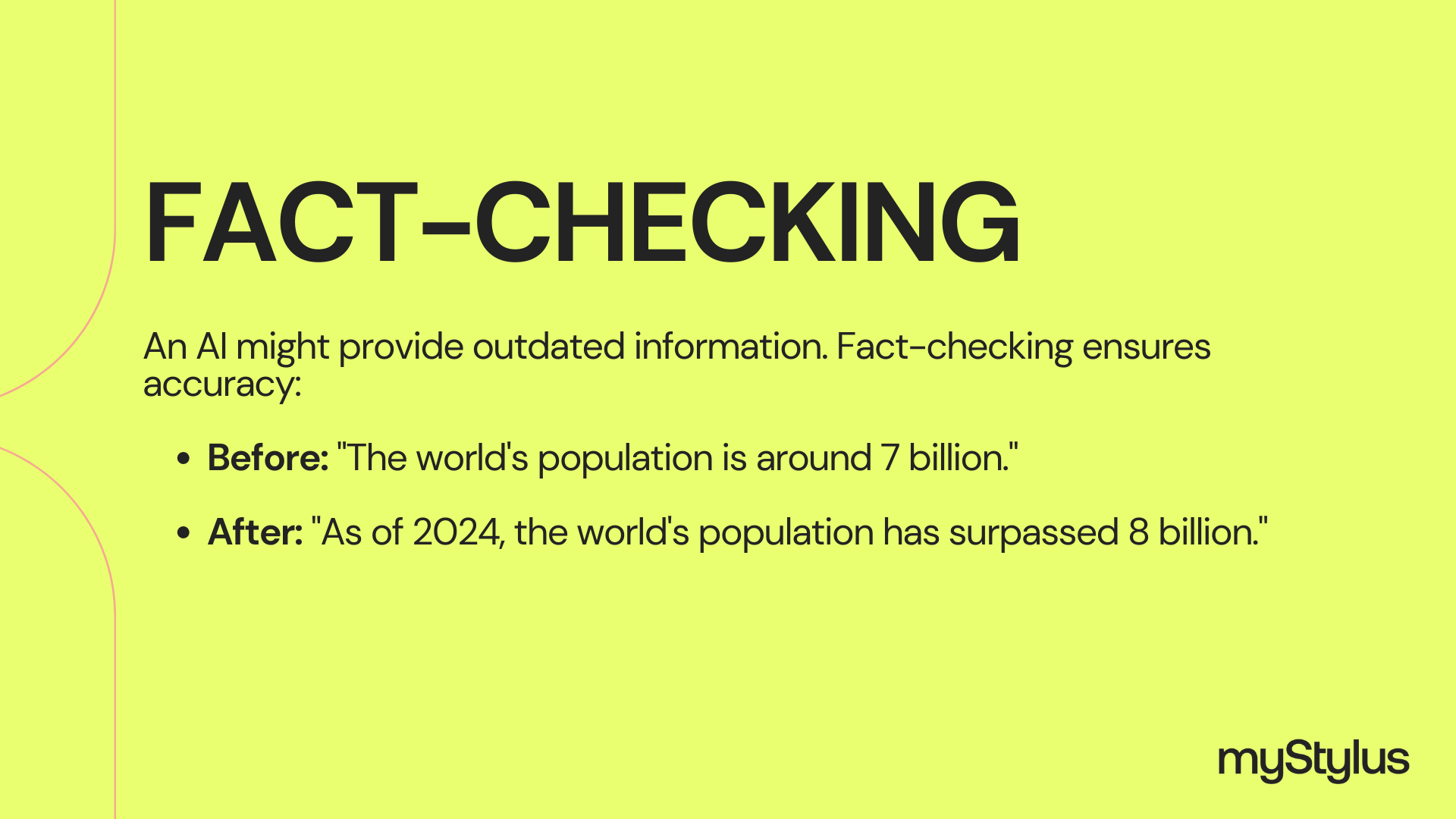
It’s helpful to consult style guides and writing resources to rewrite to sound more human. These can provide insights into effective communication techniques, industry-specific terminology, and best practices for engaging writing. They can also offer guidance on tone and voice, helping to create content that resonates with the intended audience.
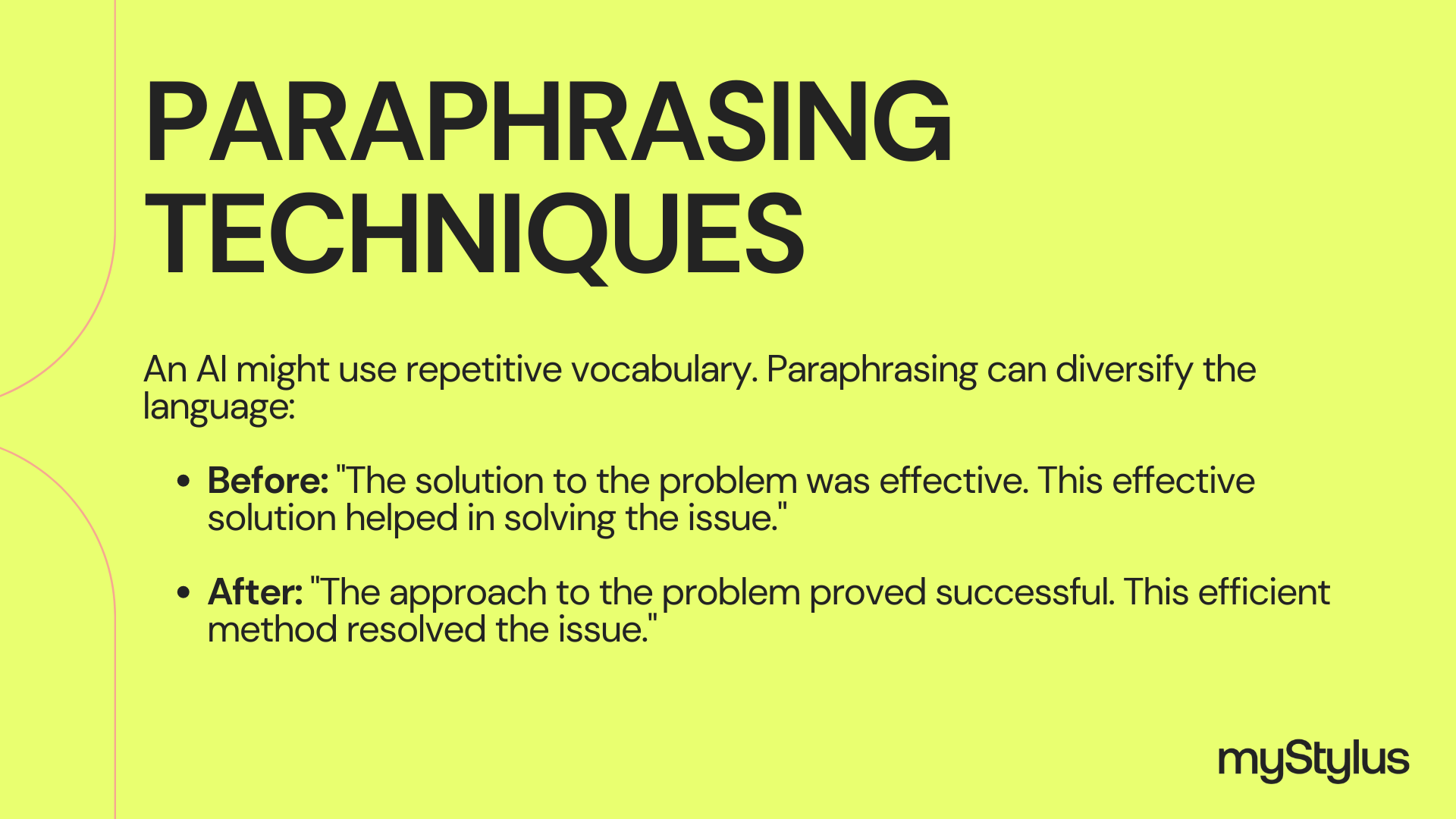
Doing all of this manually is an option, but it can be time-consuming. If you’re already using AI in your work, chances are you’re on a tight time budget and some of these techniques will just lose you the time you gained before. Instead, you should consider using an AI editor or rephraser for a more efficient process.
Need To Rewrite AI-Generated Content? Consider These Tools
There’s no need to manually rewrite everything if you have a free AI rewriter bot to help you figure out what needs to change. AI rewriters, while seemingly counterintuitive, can help diversify language and structure. Readability analyzers assess the complexity of your text, ensuring it’s accessible to your target audience. AI checkers can highlight areas that still sound too artificial, guiding your rewriting efforts.
Plagiarism detection tools are crucial to ensure your rewritten content remains original, while grammar and style checkers help polish your writing. Among the AI rewriting tools that you can use to help you include:
| Tool | Description | Main Features | Free/Paid |
| Grammarly | AI-powered writing assistant | Grammar checking, style suggestions, tone adjustments | Free version available, paid premium features |
| MyStylusAI | AI-powered writing assistant | Offers deep writing and rewriting options to create academic content | Free web version, paid version available |
| Quillbot | AI paraphrasing tool | Multiple paraphrasing modes, synonym suggestions | Free version with limitations, paid premium version |
| Copyscape | Plagiarism checker | Compares text to online content, highlights similarities | Pay-per-use model |
| ProWritingAid | Comprehensive writing editor | Style, grammar, and readability checks, writing reports | Free version with limitations, paid premium version |
It’s worth noting that myStylus AI offers an AI-driven editor that can be particularly helpful in rewriting AI-generated content. Its advanced algorithms can assist in refining and humanizing text while maintaining the original intent and information.
Checklist To Help Rewrite AI Text
To make things easier, we’ve developed a handy checklist that you can use to help you rewrite your AI text into something more human. When you use a text-changer, this checklist can give you an idea of what to keep an eye out for.
Overall, this checklist can give you an idea of what you should look for to turn your work into something that doesn’t read or sound like AI wrote it.
AI Rewriting Tools Have Their Limits
It might be tempting to think that AI rewriting tools are a silver bullet that can make anything sound human, but this wouldn’t be a correct assumption. Like all other online tools, tools that rewrite AI written text have flaws and limitations themselves. Among the limitations that users should be aware of include:
|
❌
Lack of deep understanding
|
Rewriters often struggle to grasp the nuanced context and broader implications when they rewrite AI content. This can lead to rewritten text that misses the original intent or fails to convey complex ideas accurately. |
|
❌
Limited creativity
|
These tools typically work with existing patterns and structures, which can result in predictable and sometimes uninspired rewrites. Typically, they reword paragraphs to change their cadence. They may lack the human touch that brings originality and fresh perspectives to the content. |
|
❌
Inconsistent quality
|
The output of AI rewriting tools can vary significantly in quality. Some passages may be well-rewritten, while others could be awkward or nonsensical, requiring extensive human editing. |
|
❌
Factual errors
|
AI rewriters might introduce or perpetuate factual inaccuracies, as they don’t have real-world knowledge or the ability to fact-check information. |
|
❌
Problems with tone and style
|
Maintaining a consistent tone or adapting to specific stylistic requirements can be challenging for AI tools. They may struggle to capture the appropriate voice for different audiences or purposes. |
These limitations define the issues you’ll likely have with using an AI rewriter for your work. Luckily, these are not difficult to overcome with proper planning and knowledge of the topic.
Using AI in Your Studies: Important Tips To Remember
As an academic student, using AI in your studies can save you a lot of time and energy. If you want to make the most of your academic journey, here are some pertinent tips for incorporating AI writing into your work.
|
➡️
Use AI as a learning aid, not a subsitute
|
AI can help clarify concepts or provide quick summaries, but it shouldn’t replace your own critical thinking and understanding. Instead of relying on an AI rewriter to complete assignments, use it to generate ideas or explanations that you can expand upon with your knowledge. |
|
➡️
Be specific and break down your questions
|
Ask for step-by-step explanations, examples, or analogies. This approach can help you easily grasp complex concepts and provide a foundation for deeper learning. |
|
➡️
Combine AI assistance with traditional study methods
|
For instance, use AI to generate practice questions or create study guides, then reinforce your learning through active recall, note-taking, and discussions with peers or instructors. |
|
➡️
Don’t take AI writing as final
|
When you rewrite AI-generated content, focus on infusing it with your own insights and experiences. This not only improves paragraph quality but also deepens your understanding of the subject. |
The goal should always be to use AI as an augmentation for your learning, not a replacement. By using these techniques in the right way, AI can streamline your academic experience.
The Psychology of Humanized Content
Humanized content resonates because it taps into the psychological needs and emotions of the audience. Unlike generic, AI-generated text, humanized content feels relatable, authentic, and engaging—qualities that promote trust and connection. But why does this matter so much?
At its core, humanized content appeals to the brain’s preference for storytelling and empathy. Humans are wired to connect with narratives that evoke emotions and offer a sense of shared experience. For example, a personal anecdote or conversational tone can make a reader feel seen and understood, creating a lasting impression that sterile, robotic text cannot.
Another key factor is tone. Readers respond better to content that matches their expectations and emotional state. A warm, encouraging tone in educational material helps learners feel supported, while a professional, assertive tone in business writing instills confidence. AI-generated text often lacks this nuanced adaptability, making humanization essential.
Humanized content also stands out because it mirrors natural speech patterns, complete with idiomatic expressions, varied sentence lengths, and emotional cues. These elements make the text more relatable, as if it were written specifically for the reader.
So, when you humanize AI-generated text, you’re not just making it sound better—you’re building a bridge to your audience’s emotions and instincts.
Mystylus Aims To Be Among The Best Tools To Rewrite AI-Generated Text
MyStylus is poised to make waves in the academic writing sphere with its upcoming AI-powered paragraph rewriter. The company has been diligently working on this tool, specifically tailored for students, after conducting comprehensive research on existing solutions in the market. It simplifies how to rewrite an AI generated text.
The new paragraph reworder from MyStylus will offer a variety of rewriting styles to accommodate different academic needs. Students will have access to options ranging from formal academic prose to more casual explanatory text. One of the standout features is the custom style option, which will allow users to personalize the rewriter according to their unique preferences or specific assignment requirements. Students can use this to sound more professional in their final essay submissions.
Currently, MyStylus is in the final stages of user experience (UX) research. The company actively engages with its user base, collecting valuable feedback to fine-tune the tool’s interface and functionality. This user-centric approach aims to ensure that the launched product will be intuitive, efficient, and genuinely beneficial for students involved in rewriting paragraphs.
Understanding the importance of the academic calendar, MyStylus has set a target to release their paragraph rewriter by the end of summer. This timeline will allow students to familiarize themselves with the paragraph retyper before the fall semester commences.
AI-Generated Rewriting Can Help Produce Stellar Work
From understanding the limitations of AI-generated content to employing various strategies and tools for improvement, students now have a wealth of resources at their disposal. As the landscape of academic writing evolves, services like Stylus AI are emerging as valuable allies for students navigating the complexities of their scholarly work.
As technology continues to advance, it’s clear that tools like those offered by Stylus AI will play an increasingly important role in supporting student success in their academic endeavors.
Resources
- “Generative AI in Academic Writing – the Writing Center • University of North Carolina at Chapel Hill.” The Writing Center • University of North Carolina at Chapel Hill, 14 May 2024, writingcenter.unc.edu/tips-and-tools/generative-ai-in-academic-writing/.
- Lin, Zhicheng. “Techniques for Supercharging Academic Writing with Generative AI.” Nature Biomedical Engineering, 18 Mar. 2024, www.nature.com/articles/s41551-024-01185-8, https://doi.org/10.1038/s41551-024-01185-8.
- Academia, Master. “The Best AI Tools for Academic Paraphrasing: Tested and Ranked.” Master Academia -, Master Academia, 22 Jan. 2024, master-academia.com/best-ai-academic-paraphrasing/.
- “How Can GenAI Enhance Peer Review of Writing? | Libraries & Academic Innovation.” Gwu.edu, 2024, library.gwu.edu/how-can-genai-enhance-peer-review-writing.
FAQ
-
Why should I rewrite AI essay text instead of using it as-is?
Rewriting AI-generated text helps you avoid plagiarism in an article, ensures originality, and allows you to infuse your own ideas and understanding. It also enables you to develop critical thinking skills essential for academic growth. -
What techniques can I use to rewrite AI-generated text effectively?
Effective techniques include restructuring sentences, using synonyms, adding personal examples, incorporating current research, and adjusting the tone to match your voice. Focus on enhancing clarity and coherence while maintaining the core ideas. -
How can rewriting AI-generated content improve my learning?
Rewriting encourages more profound engagement with the material, forcing you to understand and interpret the content. This process helps reinforce key concepts, improves retention, and develops your analytical and writing skills. -
How do I maintain my own academic voice when using a paragraph enhancer tool?
Add personal insights, use familiar phrases, and adjust the tone to match your usual writing style. Review and edit the rewritten content to ensure it reflects your unique perspective and academic voice. -
What tools can help me rewrite paragraphs?
In addition to AI rewriters, consider using thesaurus tools, readability analyzers, and grammar checkers. A paragraph fixer uses all these tools. Style guides and academic writing resources can also provide valuable assistance in refining your rewritten content. -
How can I ensure academic integrity when using an AI-generated paper as a starting point?
Use the AI-generated content as a brainstorming tool, not the final product. Substantially rewrite and expand on the ideas, add your own research and citations, and always acknowledge any AI assistance in your work. -
Is it ethical to use AI rewriting tools for academic work?
AI rewriting tools can be ethical when used responsibly as a learning aid and not a substitute for your own work. The key is to use them to enhance your understanding and writing skills, not to bypass the learning process. -
How can I verify the accuracy of information in AI-generated content?
Always fact-check information from AI sources using reputable academic databases, peer-reviewed journals, and authoritative books. Cross-reference multiple sources to ensure accuracy before including information in your work.
